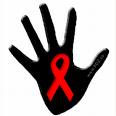Blacks
Continue to Have Highest Rate of HIV Diagnosis in U.S.
 |
 |
 |
 |
SUMMARY:
In advance of National Black
HIV/AIDS Awareness Day this past Monday, the U.S.
Centers for Disease Control and Prevention (CDC)
published a new report in the February 4, 2011,
issue of Morbidity
and Mortality Weekly Report
showing that African Americans are still much more
likely to be diagnosed with HIV infection than any
other racial/ethnic group. Black men were 8 times
more likely and black women were 19 times more likely
to receive an HIV diagnosis during 2008 than white
men and women. |
|
 |
 |
 |
 |
By
Liz Highleyman
 Blacks/African
Americans have been affected disproportionately by HIV
since the early years of the epidemic, the report authors
noted. While they make up about 14% of the total U.S. population,
blacks accounted for half of all HIV diagnoses among adolescents
and adults during 2005-2008 in the 37 states with consistent
names-based reporting.
Blacks/African
Americans have been affected disproportionately by HIV
since the early years of the epidemic, the report authors
noted. While they make up about 14% of the total U.S. population,
blacks accounted for half of all HIV diagnoses among adolescents
and adults during 2005-2008 in the 37 states with consistent
names-based reporting.
The
investigators used data from the National HIV Surveillance
System to estimate numbers, percentages, and rates of HIV
diagnoses among blacks/African Americans during this period
in states with "mature" HIV surveillance systems,
that is, those in operation since at least January 2005.
Results
 |
During
2008 black men were 8 times more likely to be diagnosed
with HIV than white men and twice as likely as Hispanic/Latino
men. |
 |
Black
women were 19 times more likely to be diagnosed than white
women and 4 times more likely than Hispanic/Latino women. |
 |
Blacks
accounted for 50.3% of all 156,812 HIV diagnoses during
2005-2008. |
 |
Blacks
accounted for 46.4% of diagnoses among people age 25-44
and 55.7% among people in the southern U.S. |
 |
The
number of new HIV diagnoses (not necessarily new infections)
each year among black men increased during 2005-2008. |
 |
HIV
transmissions among black men were classified most frequently
as attributable to male-to-male sexual contact (61.1%),
followed by heterosexual contact (23.1%), injection drug
use (11.9%), and male-to-male sex/injection drug use together
(3.6%). |
 |
Young
men age 13-24 accounted for the largest percentage --
30.9% -- of HIV diagnoses among black men who have sex
with men. |
 |
Most
black women diagnosed with HIV were exposed through heterosexual
contact (85.2%), followed by injection drug use (14.0%). |
The
National HIV/AIDS Strategy released this past July identified
reducing HIV-related health disparities as one of its 3 key
goals.
"Reducing
HIV risk behaviors and increasing access to testing and referral
to health care can help eliminate disparities between blacks/African
Americans and other racial/ethnic populations in the rates
at which HIV infection is diagnosed," the report authors
concluded.
"The
higher rates of diagnoses among blacks/African Americans suggest
that adolescents and adults from this population who are at
higher risk for HIV infection might benefit from more frequent
testing to facilitate earlier diagnosis," according to
an accompanying editorial note. "Persons infected with
HIV who know their status can be referred to medical care
and treatment that can improve the quality and length of their
lives and to prevention services that can reduce the risk
for further transmission."
Investigator
affiliation: Division of HIV/AIDS Prevention, National Center
for HIV/AIDS, Viral Hepatitis, STD, and TB Prevention, CDC.
2/11/11
Reference
B
Laffoon, A Satcher Johnson, S Cohen, and others (CDC). Disparities
in Diagnoses of HIV Infection Between Blacks/African Americans
and Other Racial/Ethnic Populations -- 37 States, 2005-2008.
Morbidity and Mortality Weekly Report 60(4): 93-98 (abstract).
February 4, 2011.
